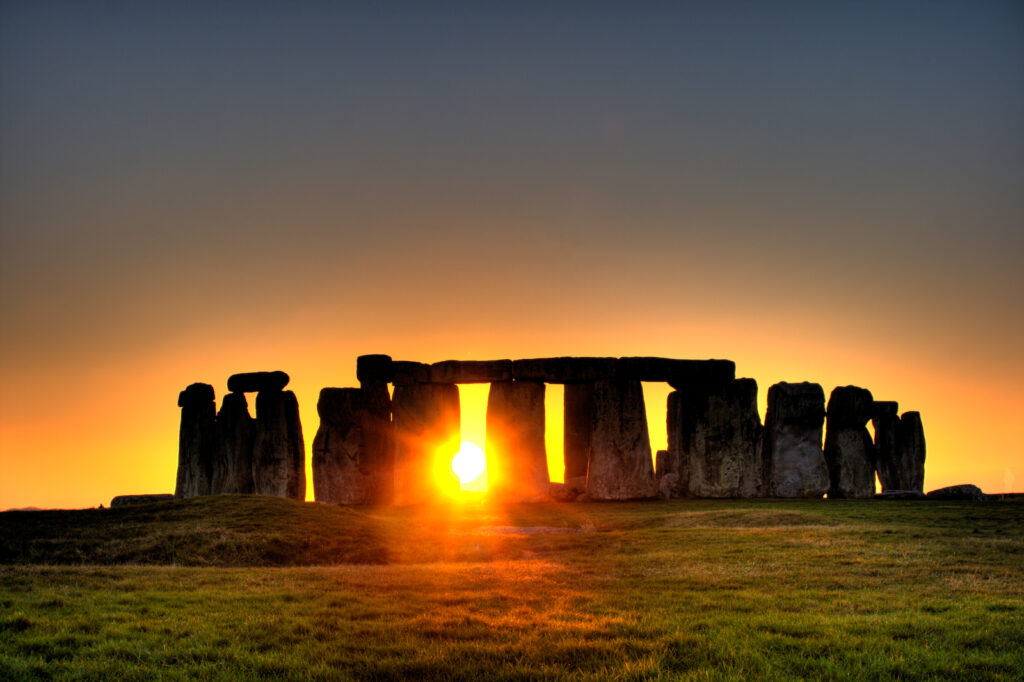
David P. Turner / June 13, 2021
Every human being on the planet will experience an astronomical event on June 20 (2021). I refer of course to the June Solstice, the point in Earth’s orbit around the sun when daylength begins to shorten in the northern hemisphere and to lengthen in the southern hemisphere. The astronomical orientation is reversed in the December Solstice. Our ancestors were very attuned to these annual events, as evinced by the alignment of the megaliths at Stonehenge and at other ancient observatories. Most Earth dwellers now live urban lives and may give little thought to the orientation of Earth to Sun. I propose thinking about Solstice events in a new way – as a celebration of planetary citizenship.
Especially since the late 1980s, scientists have produced a drumbeat of reports documenting a range of global environmental change threats, notably climate change. The sum of environmental impacts from 7.8 billion people is driving the Earth system towards a condition that will cause vast human misery, and perhaps imperil civilization itself. Humanity clearly must begin to act collectively to mitigate our impacts on the environment. But we live in a world that is highly polarized and seemingly getting more so.
Humans are social animals, and generally identify with a circumscribed social group. However, because global scale problems require global scale solutions, we Earthlings must now begin identifying with humanity as a whole − quite a challenge for a species whose social instincts evolved when social groups were small bands of hunter gatherers. A unifying feature of a society is its shared culture, including myths, beliefs, and rituals. The new importance of the Solstice lies its contribution to an emerging global culture.
Several features make the Solstice a unifying event. One is that it is clearly a global phenomenon: everyone experiences it (albeit more strongly at high latitudes). The celestial mechanics of the Solstice are fairly simple, and contemplating the event stimulates thinking about global scale structures and processes − something which we certainly need to be doing to address the environmental challenges ahead.
A second relevant feature is that our understanding of the Solstice is science-based. Whereas the early celebrants at Stonehenge knew from their long-term observations only that the sun had reached its northernmost circuit on Summer Solstice or was beginning its return from the south on Winter Solstice, we can chart Earth’s orbit around the sun and understand that our planet is tilted on its axis, hence the pattern of seasonality. More broadly, we understand Earth’s climate system and how it is regulated by solar geometry, as well as greenhouse gases in the atmosphere. For the purposes of a needed common belief system, the scientific worldview wonderfully fits the bill. The advance of science now provides a growing intellectual heritage that all of humanity can share.
As to how the Solstice might be celebrated, most people on Earth can walk outdoors at sunrise or sunset on June 20th and note where on the horizon that the sun appears or disappears. The time of day and angle on the horizon are different at every location on Earth, but we all know it is a special day for the planet.
In a complimentary sense, this action would also help invigorate the local sense of place. Every year at any location, the two Solstice events will repeat − kind of a comfort really.
Traditional ways of celebrating the Solstice include decorating trees and lighting candles (Scandinavia). Occasionally, the media take notice. This year, wish everybody a happy solstice! Perhaps we can eventually make it a global holiday.
In this era of growing nationalism and anti-globalization, when the gathering storm of global environmental change means that the society composed of all humanity should be strengthening rather than weakening, we must search for unifying experiences and beliefs. Attending to the Solstice, be it the one in June or the one in December, is a way to relate to our planetary home and be reminded that we are all in this together.
Recommended Audio: Seasons by the Steve Miller Band.

